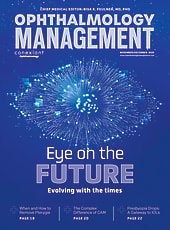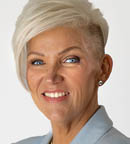In today's rapidly evolving health care landscape, patients are increasingly turning to online reviews and ratings when choosing their health care providers. With this shift in consumer behavior, coupled with the continued decline in payer reimbursements, medical practices face an ongoing challenge: How can they maintain financial success while staying on the cutting edge of technology and providing high-quality, patient-centric care?
At Alliance Vision Institute, we’ve been answering that question since our inception in 2016. Our mission was clear from the start: to offer state-of-the-art technology while prioritizing patient safety, clinical efficacy, and, most importantly, patient satisfaction.
A Vision for Innovation
In early 2022, our founder and chief surgeon, Dr. Taylor Strange, brought his forward-thinking mindset into the operating room once again. Fascinated by emerging technologies, Dr. Strange identified an exciting new option in cataract surgery: the Light Adjustable Lens (LAL; RxSight). This intraocular lens (IOL) is the only one in the world that allows post-surgical adjustability, enabling patients to fine-tune their vision to fit their unique needs and lifestyle.
For our practice, the LAL was a natural fit—combining advanced technology with our commitment to individualized patient care. The ability to customize vision after surgery is a game-changer, but it also requires a thorough educational journey for both our staff and patients.
Educating the Entire Team
From the outset, we understood that successful integration of the LAL required more than just the expertise of our surgeons. It required an informed, confident team at every level of the practice. From the call team to the check-out staff, each member needed to be equipped to answer questions, set expectations, and guide patients through the process.
Here are a few critical points we made sure to emphasize with our team:
• Post-operative adjustability: The LAL can be customized to the patient’s vision needs after surgery.
• Additional follow-up appointments: Patients will require multiple visits post-surgery for adjustment treatments. Setting proper expectations beforehand is key.
• Patient candidacy: Not all patients are suitable for every lens option. A thorough evaluation by the provider is essential in determining the best fit.
We worked closely with the RxSight team to provide comprehensive training, ensuring our surgical counselors, clinical staff, and providers were all aligned. Their support continues to be an invaluable resource as we grow and refine our practice.
Our team-based education wasn’t confined to internal staff alone. We also extended this knowledge to the external optometric practices in our community, which play an integral role in our collaborative care approach. Our Referral Network Liaisons serve as the educative link between us and the referring providers and their teams. Ensuring your referring providers have access to educative resources is vital to their ability to provide information to referred patients. Sharing the education provides a seamless approach to patient care when conversations regarding surgical options can begin before a patient even enters your practice.
Streamlining Workflows for Maximum Efficiency
While the educational journey was pivotal, the operational side of integrating the LAL also presented challenges.
For example, one area where we initially faced obstacles was block scheduling for post-surgical adjustments. Given our patient volume, blocking our providers' schedules specifically for adjustments limited our ability to meet the needs of both LAL and non-LAL patients.
By analyzing the time required for adjustments (approximately 45 minutes), we realized we could efficiently combine these appointments with others throughout the day, providing more flexibility for patients while maintaining our practice's workflow.
Once we adjusted the appointment workflows, we noticed that other clinical workflows needed fine-tuning as well. To keep our providers moving through the clinical exam process efficiently, we identified some duplication in patient education. Our providers would share lens information during the exam, and then our surgical counselors would do so again. Our surgical counselors, however, are much more than surgery schedulers—they are rapport builders, the point of contact for patients, and the guides through the surgical pathway.
We found it highly efficient for our providers to share the primary surgical recommendation with the patient and then hand off the rest of the education to the surgical counseling team. This streamlined the process for both the patient and the team.
Another significant change came with sequential surgeries. Prior to introducing the LAL, we performed cataract surgeries one week apart. However, to ensure optimal healing and alignment with the post-surgical adjustments, we shifted to performing surgeries sequentially—patients have their surgical procedures 1 day apart from each other in the same week. For example, the first eye on Monday, and the second eye on Tuesday. Refractive lens exchanges are performed bilaterally on the same day. This change not only improved patient outcomes but also allowed us to streamline our processes, creating a more cohesive care experience.
By the end of our first year with the Light Adjustable Lens, our practice had experienced significant growth—both in patient volume and satisfaction. Over the last 2 years, this surge in demand allowed us to expand our services to 3 satellite clinics and onboard 6 additional providers, further solidifying our position as a leader in advanced comprehensive-refractive surgical eye care.
Conclusion
At Alliance Vision Institute, our journey with the Light Adjustable Lens is just one example of how we’ve stayed ahead of the curve in an increasingly competitive health care landscape. By embracing cutting-edge technology, providing thorough education for our team, and refining our workflows, we’ve been able to maintain a patient-first approach while scaling our practice effectively.
As we continue to expand and innovate, our focus remains clear: providing personalized, high-quality care that keeps our patients—and their vision—at the heart of everything
we do. OP











